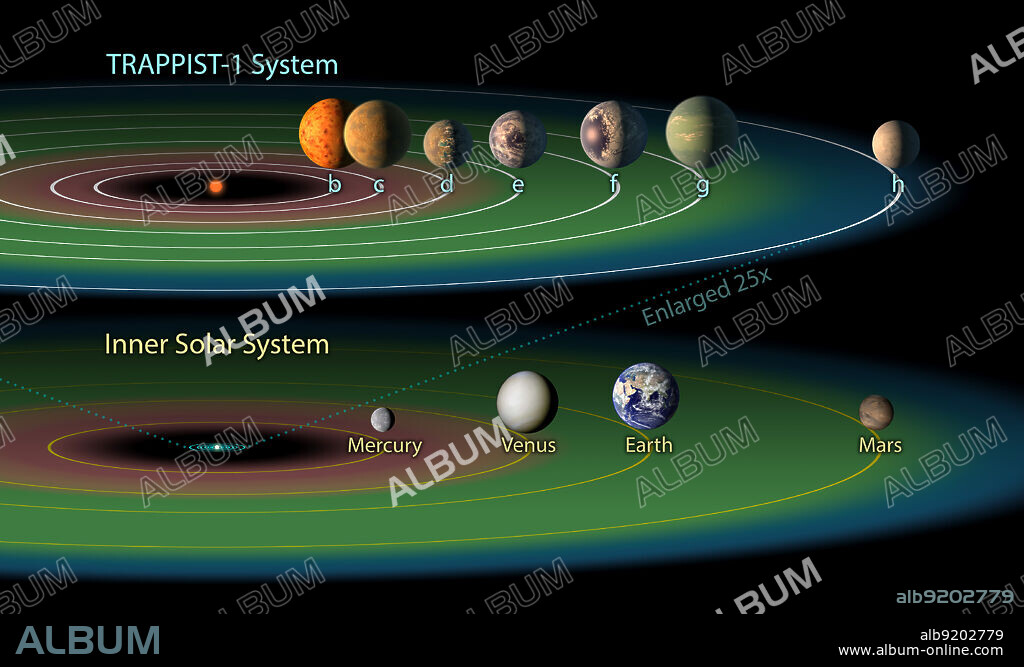alb9202779
TRAPPIST-1 Habitable Zone

|
Zu einem anderen Lightbox hinzufügen |
|
Zu einem anderen Lightbox hinzufügen |



Haben Sie bereits ein Konto? Anmelden
Sie haben kein Konto? Registrieren
Dieses Bild kaufen

Titel:
TRAPPIST-1 Habitable Zone
Untertitel:
Siehe automatische Übersetzung
The TRAPPIST-1 system contains a total of seven planets, all around the size of Earth. Three of them -- TRAPPIST-1e, f and g -- dwell in their star's so-called 'habitable zone'. The habitable zone, or Goldilocks zone, is a band around every star (shown here in green) where astronomers have calculated that temperatures are just right -- not too hot, not too cold -- for liquid water to pool on the surface of an Earth-like world. While TRAPPIST-1b, c and d are too close to be in the system's likely habitable zone, and TRAPPIST-1h is too far away, the planets' discoverers say more optimistic scenarios could allow any or all of the planets to harbor liquid water. In particular, the strikingly small orbits of these worlds make it likely that most, if not all of them, perpetually show the same face to their star, the way our moon always shows the same face to the Earth. This would result in an extreme range of temperatures from the day to night sides, allowing for situations not factored into the traditional habitable zone definition. The illustrations shown for the various planets depict a range of possible scenarios of what they could look like.
Bildnachweis:
Album / NASA/JPL-Caltech / Science Source
Freigaben (Releases):
Model: Nein - Eigentum: Nein
Rechtefragen?
Rechtefragen?
Bildgröße:
Nicht verfügbar
Druckgröße:
Nicht verfügbar
Schlüsselwörter:
ASTRONOMIE • ERKUNDUNG • GRAFISCH • ILLUSTRATION • ILLUSTRATIONS • KARTE • KUENSTLER • KÜNSTLER • OBSERVATORIUM • PLANET ALLE • PLANET • PLANETARIUM • STERNWARTE • UMLAUFBAHN • UNIVERSUM (WELTALL) • WELTRAUM • WISSENSCH.: ASTRONOMIE • ZWERG
 Pinterest
Pinterest Twitter
Twitter Facebook
Facebook Link kopieren
Link kopieren Email
Email
